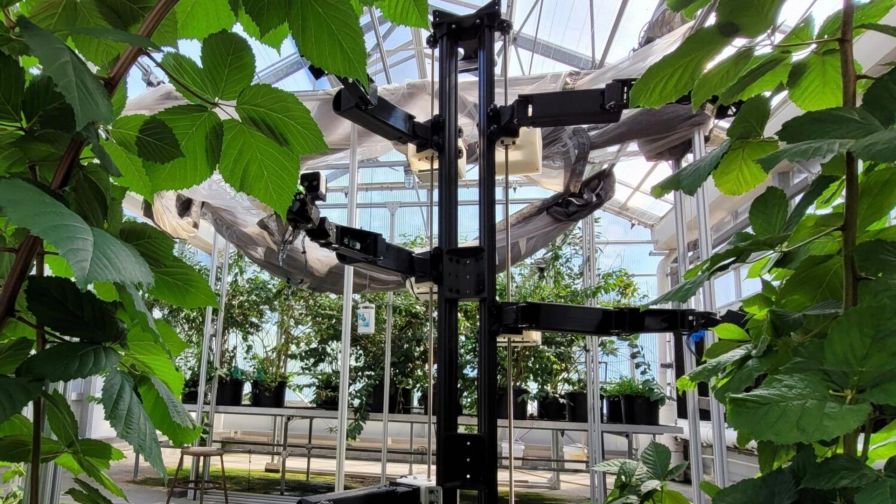How We Can Empower the Next Generation of Ag Leaders and Workers Through Technology
Technology is often touted as the savior of much of the world’s current challenges, and agriculture is no exception. Yet despite a rise in agritech, two dual challenges emerge in the sector: the declining interest from the younger generation, and perplexing productivity stagnation. Just as the average farmer reaches 58 years old and only 6% of growers fall under 35, according to the National Young Farmers Coalition, multiple sectors are seeing significant decreases in labor productivity: a 2.5% decrease in manufacturing labor productivity as reported by the U.S. Bureau of Labor Statistics. The allure of knowledge-driven careers, promising lucrative returns, threatens to sideline traditional sectors like agriculture. If we are to truly empower the ag sector with technology, it must be made to engage a new generation of workers, while also creating better conditions and productivity of workers.
Misconceptions and Challenges in Agriculture
Agriculture is often perceived as low-paying, high-risk, and easily replaceable by technology. In reality, farming demands specialized knowledge in genetics, meteorology, pest management, and soil composition. The challenges of attracting young talent aren’t exclusive to agriculture. The U.S. manufacturing sector foresees a staggering 2.1 million worker shortage by 2030. This emphasizes the urgency to make careers in traditional sectors, including agriculture, more appealing to the youth.
Learning from International Efforts
Several countries have successfully countered this declining interest by investing in technological development for rural areas. According to the World Bank, Brazil and China have invested significant amounts into agricultural research and development (R&D). According to USDA data, China’s annual expenditure on agricultural R&D exceeds $10 billion and Brazil employed more than 5,000 full-time researchers and spent more than $1 billion on agricultural R&D. These investments have boosted agricultural productivity and profitability, making the sector more attractive to potential workers.
The Human Touch in a Tech-Driven World
The manufacturing landscape also lends the lessons that despite the rise in automation, the human touch remains paramount, and agriculture too can’t rely solely on technology. Machines can assist, but it’s the knowledge and expertise of the grower that truly drives the sector. Enhancing productivity and labor conditions via a human in the loop transformation is critical. If melded with principles like Lean and positive organizational change that democratizes data and visibility from technology, the two can make the workplace more appealing, efficient, and rewarding. They enable task monitoring, skill development, and knowledge enhancement, making farming an engaging and less physically demanding profession. For instance, digital tools offer real-time performance feedback, helping workers refine their skills.
Incentives and Educational Foundations
Rewarding efficiency and quality, coupled with benefits like scholarships and healthcare, can elevate job satisfaction and foster loyalty in the agricultural sector. An inclusive environment where every employee feels valued is pivotal for enhancing morale and productivity. The Organisation for Economic Co-operation and Development underscores that growth in agricultural productivity is essential to meet increasing food demands sustainably and to spur income growth.
To captivate the youth, it’s vital to dispel misconceptions about agricultural careers, highlight its importance, and emphasize the comprehensive knowledge it encompasses. Drawing inspiration from the manufacturing sector’s embrace of STEM to address its skills deficit, it’s imperative for farmers, industry leaders, academia, and policymakers to rally behind a unified vision for agriculture. This vision should prioritize bolstering its educational foundation, championing interdisciplinary studies, and seamlessly weaving in modern tech adoption and training. Additionally, enhancing safety and mentorship programs that offer new and aspiring farmers the chance to learn from experienced professionals in the field. All this will prepare the next generation for the evolving demands of farming.
Reviving Interest in Agriculture for a Sustainable Future
Uniting agriculture with technology fosters a human-in-the-loop approach, melding expertise with innovation. This blend rejuvenates agricultural interest, attracting younger generations. The future lies in this union, safeguarding our food supply and empowering the sector for generations to come. It’s crucial for government bodies to play a more active role, providing both financial and infrastructural support to the industry, ensuring the widespread adoption and effective training of cutting-edge agricultural technologies. When choosing to adopt new technologies, operators and growers should look for technologies and their providers that embody this balance.











